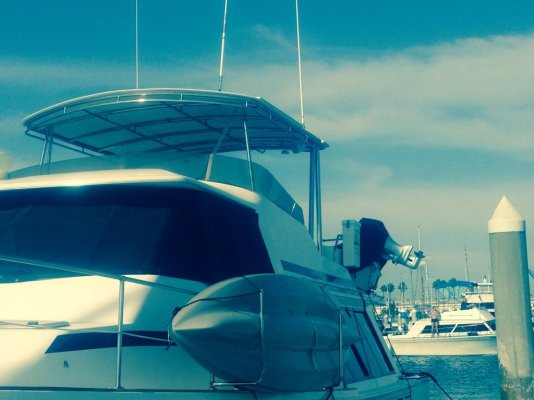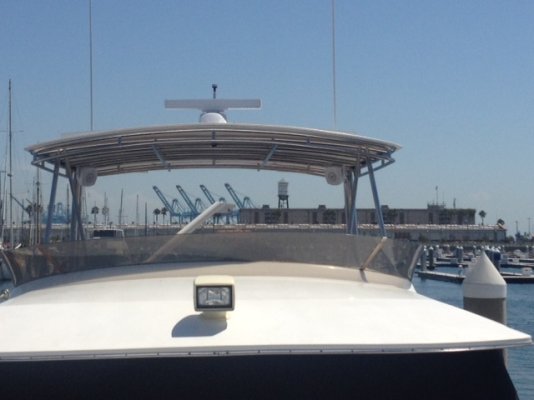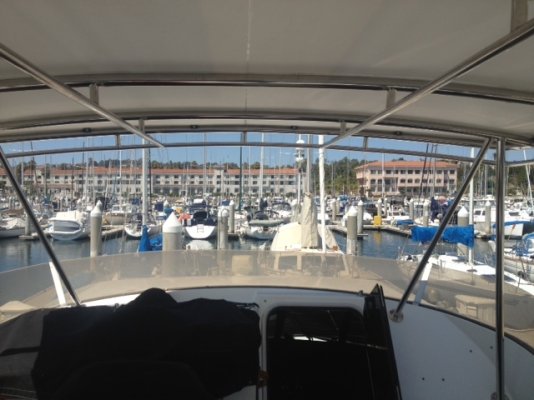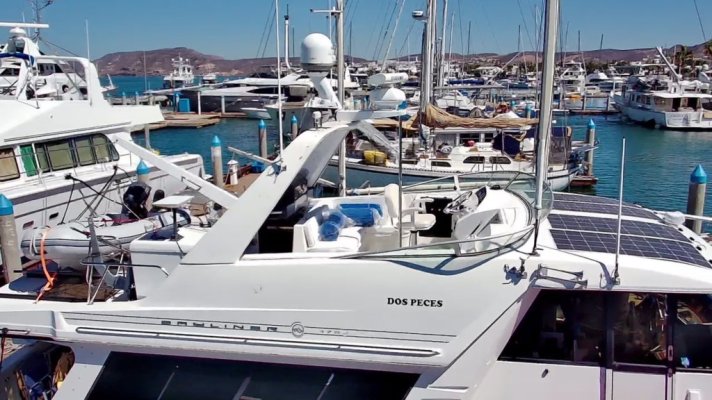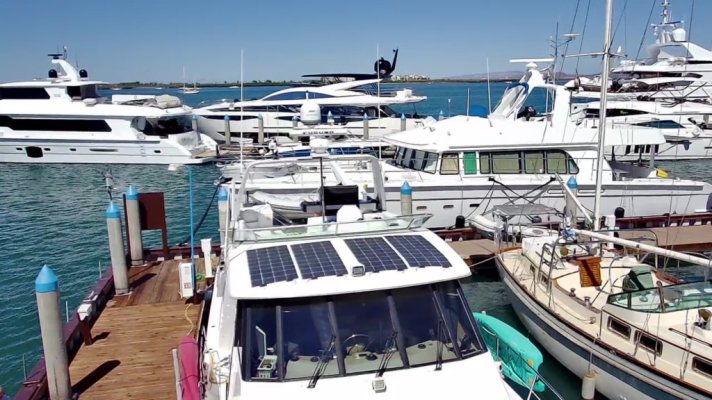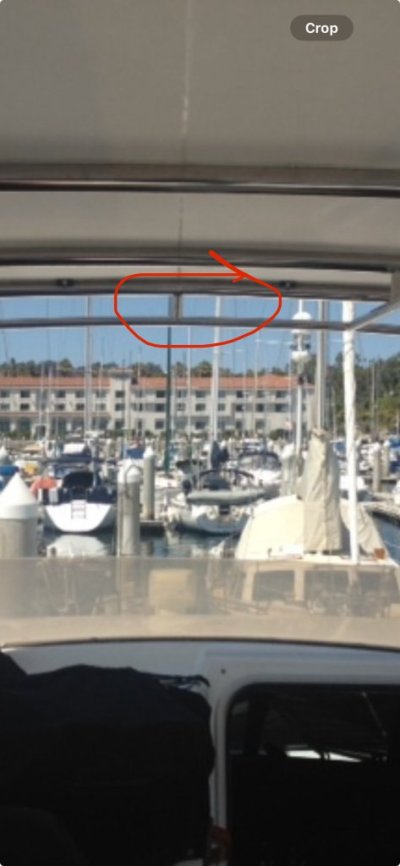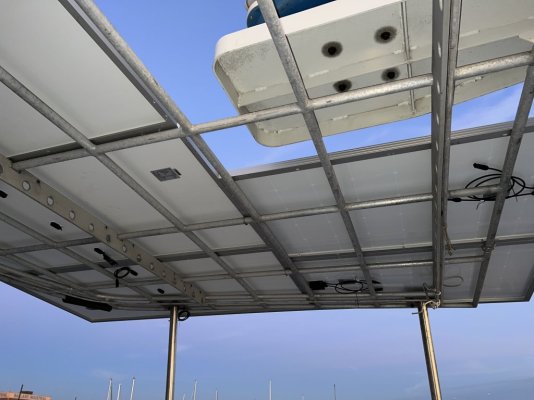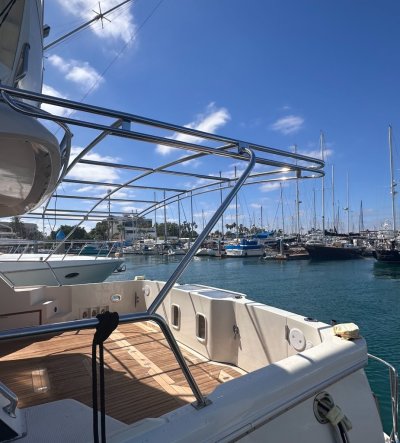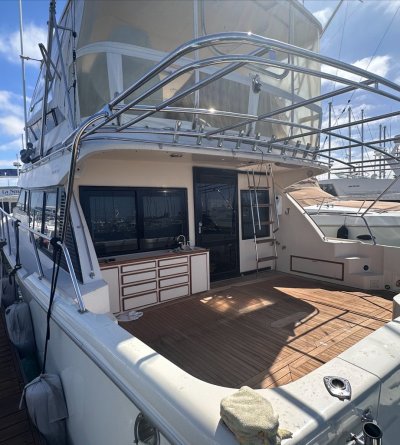ksanders
Moderator Emeritus
I've contracted with my local stainless steel expert to build a hard top support for my Bayliner 4788
Now it's time to decide exactly what to have him build.
What I have is an existing Radar arch. That will stay, and the hard top will extend foreward.
What I want to do is add windows on the front, and the sides. The windows on the aft part of the sides can roll up.
The idea of the hard top is/was that the stainless guy would fabricate the metal, and then I would cover the hard top with starboard like my friend did in the attached photos.
But... what if i had the metal guy just finish the job with sheet stainless steel? I need to figure out the weights but starboard isn't light, would stainless be lighter or heavier.
Would it look funky?
What would you do?
Here are some photos of my friends hard top, and some good shots of my flybridge
Now it's time to decide exactly what to have him build.
What I have is an existing Radar arch. That will stay, and the hard top will extend foreward.
What I want to do is add windows on the front, and the sides. The windows on the aft part of the sides can roll up.
The idea of the hard top is/was that the stainless guy would fabricate the metal, and then I would cover the hard top with starboard like my friend did in the attached photos.
But... what if i had the metal guy just finish the job with sheet stainless steel? I need to figure out the weights but starboard isn't light, would stainless be lighter or heavier.
Would it look funky?
What would you do?
Here are some photos of my friends hard top, and some good shots of my flybridge

